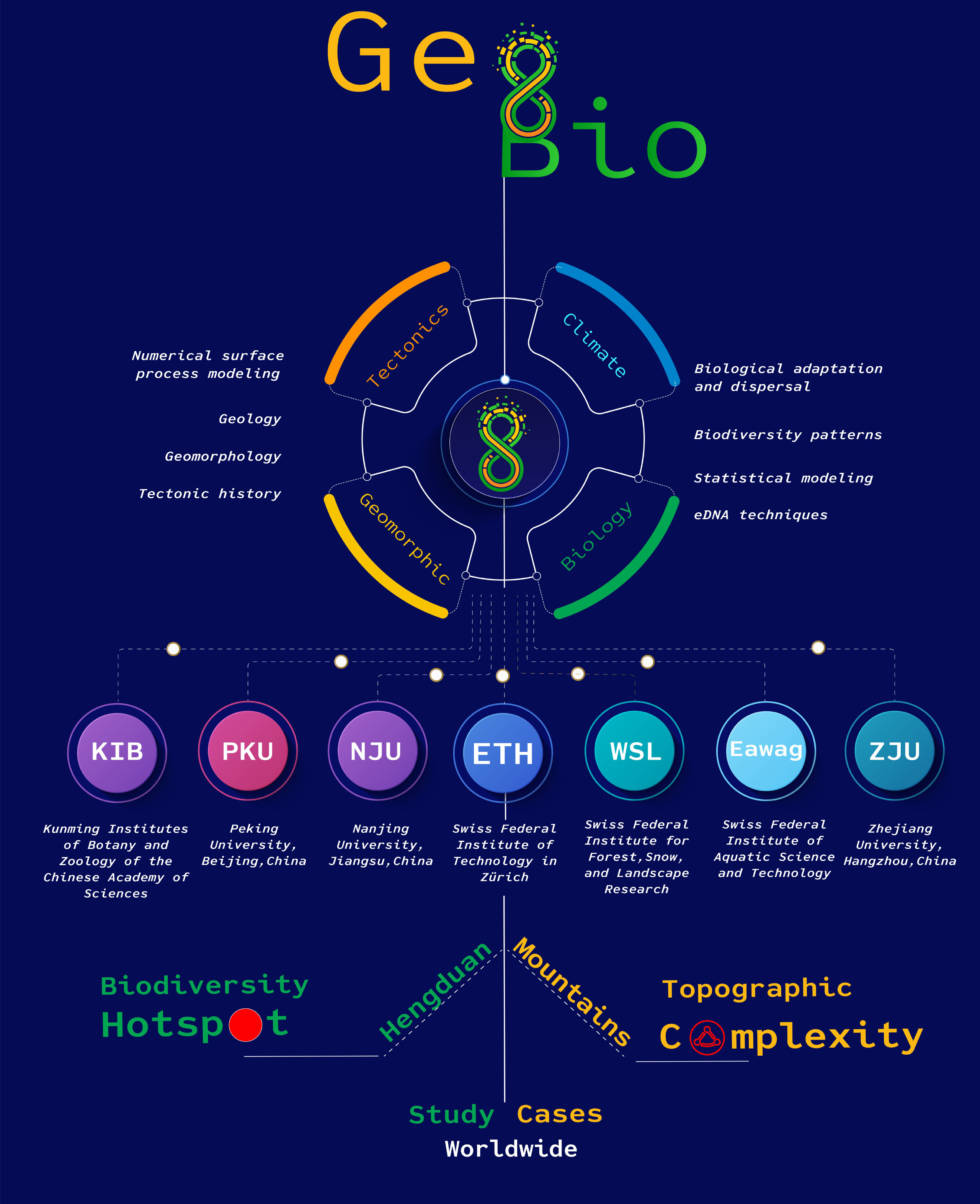About the project
We built a platform for trans-disciplinary collaboration research with the focus on coupling geological and biological processes to understand biodiversity in relation to landscape evolution.
The physical geography is of great significance and value to the evolution and diversification of life. This importance has been widely recognized since Alexander von Humboldt documented the connections between species distributions, topography, and climate in the Andes. For instance, the plate tectonics theory relied from the beginning on biological evidence and the study of mountain building processes integrated biogeography.
In these geo-biology projects, the focus is the interactions between geodynamic, physical geography, climate, and the diversification of life. Of great interest in the projects we work on with collaborators, are the understanding of how the lateral and vertical movements of the Earth’s crust, the processes of building and removing topography together with spatial and temporal climate dynamics map phylogenies and biodiversity patterns in time and space.
We will work from the presumption that the connections between tectonics, topography, climate, speciation mechanisms, dispersal and ranges of species are beyond simple correlations and cannot be explained just by classical approaches of using a few ecological substrates such as precipitation and air temperature. These interactions are multivariate, with a suite of process linkages. For example, linking landscape change with biodiversity evolution should encompass more than one perspective and include tectonic generation of relief, river capture, and drainage basin reorganization. Moreover, including climatic clines which can act as barriers between ecological domains, is necessary in studying rates of biodiversity within dynamic landscapes.
Our goal is to test the spatial and temporal evolution of landscape, ecology, and species in regions of the world that provide natural laboratories to experiment and find the characteristic fingerprints of processes defined by both geologic and biologic data. We do this by breaking up the dynamical complexity into isolated processes, where this geo-bio coupling is stronger, to simulate the interconnection, describe them and find the specific signatures in the empirical evidence. We expect that processes such as topography deformation in response to large transcurrent faults, sculpting of deep valleys, major river captures or the isolation of elevated plateaus will each have a signature in geologic data, but also in biological data.
This trans-disciplinary collaboration is based on research from the following groups at ETH Zürich
- Climate and Water Cycle, Institute for Atmospheric and Climate Science
- Earth Surface Dynamics, Geological Insitute
- Ecosystems and Landscape Evolution, Institute of Terrestrial Ecosystems
- Geophysical Fluid Dynamics, Institute of Geophysics
- Computational Evolution, Institute of Geophysics
The relative projects are funded by ETH and SNF.
